I am delighted to be hosting Day 4 of Toni Mount’s book tour for her latest novel, The Colour of Murder. To mark the occasion, Toni has written a fascinating guest post titled, ‘Witchcraft & the 15th century Royals’. Happy reading!
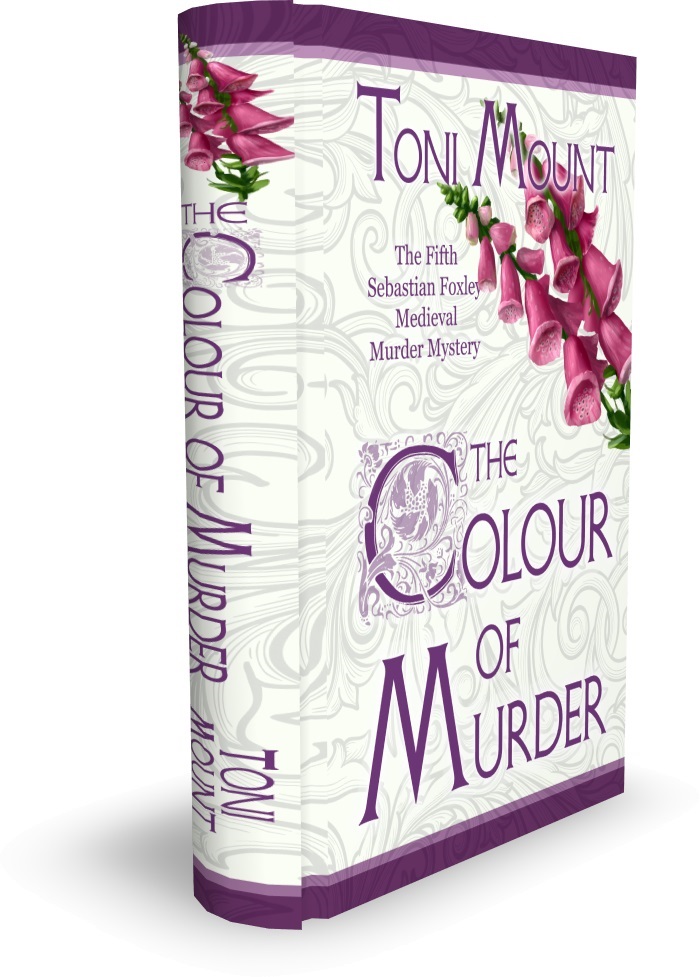 The Colour of Murder
The Colour of Murder
540 years ago, on the 18th February 1478 the Duke of Clarence was, famously, drowned in a butt of malmsey wine. Did he jump or was he pushed? The question has never been answered, so this was an opportunity for my intrepid investigator Seb Foxley – to finally solve the mystery.
http://getbook.at/colour_of_murder
Book Blurb
In February 1478, London is not a safe haven, whether for princes or commoners. A wealthy merchant is killed by an intruder; a royal duke dies at the Tower but in neither case is the matter quite as it seems. Seb Foxley, an intrepid young artist, finds himself in the darkest of places, fleeing for his life. With foul deeds afoot at the king’s court, his wife Emily pregnant and his brother Jude’s hope of marrying Rose thwarted, can Seb unearth the secrets which others would prefer to keep hidden? Join Seb and Jude, their lives at hazard in the dangerous streets of the city, as they struggle to solve crimes and keep their business flourishing in this new Sebastian Foxley medieval murder mystery: The Colour of Murder.
Book Cover
The beautiful cover is juxtaposed to the horror of murder as Seb Foxley unravels the story of the death of The Duke of Clarence in the Tower of London in February 1478. See the cover created by Dmitry Yakhovsky here.
The Foxley Letters – An exclusive collection of letters …
This unique e-book in the bestselling Sebastian Foxley Medieval Murder Mystery Series is free to download. With personal letters from all the main characters, including Seb, Emily, Jude and even the wonderful Jack, this collection of letters will add to the lives and stories of those involved in the intrigue, drama and excitement of these historical thrillers set in Medieval London.
https://www.madeglobal.com/authors/toni-mount/download/
Witchcraft & the 15th-century Royals
As happens in my new novel The Colour of Murder, there were rumours at the time hinting that King Edward IV’s wife and, in particular, his mother-in-law, had dabbled in witchcraft – how else to explain Edward’s infatuation with Elizabeth Woodville-Grey, a near penniless widow of the enemy to the point of marrying her in 1464? There is probably a very human explanation: an attractive, sexy, older woman pleads poverty and vulnerability to a young, lusty guy, drunk on the power of kingship, who thinks that whatever he desires is there for the taking.
However, there were those who found it unbelievable that Europe’s most eligible bachelor, who could have had the pick of wealthy princesses, had married instead a woman so unsuitable, who brought no dowry, no prospect of a valuable political alliance but a plethora of unwed siblings. No wonder that in 1469, when Edward fell out with his powerful cousin, the Earl of Warwick, Warwick blamed the now-influential Woodvilles and must have been delighted when someone claimed they had found lead images which Elizabeth’s mother, Jacquetta of Luxembourg, had made and used for the purposes of witchcraft. In those days, sorcerers and witches were very real and provided an explanation for Edward having wed Elizabeth – obviously, she and her mother must have employed the Black Arts to bewitch and enthral the king.
Both Jacquetta and Edward refuted the allegations and the charges were dropped – but not forgotten. After Edward died unexpectedly in 1483, his brother, now King Richard III, revived the accusations. Although Jacquetta had died in 1472, Parliament declared that she had brought about the king’s marriage to her daughter by means of witchcraft. Whether people believed it or not, it was a convenient explanation and served to further blacken the Woodville name. But Jacquetta wasn’t the first royal to be accused of using witchcraft against the king in the fifteenth century.
On the 7th February 1403, King Henry IV wed Joan of Navarre. Joan had been married in 1386 to John V, Duke of Brittany. The couple had nine children. Her first husband died on 1 November 1399 and for four years Joan acted as regent for her young, son John VI. Joan and Henry had no children together but she had a good relationship with Henry’s children from his first marriage, often taking the side Prince Henry in his quarrels with his father. So it must have come as a huge shock when, six years after the prince had become King Henry V, Joan was suddenly accused of using witchcraft in an attempt to try to poison her royal stepson. She was convicted in 1419 and imprisoned for about four years in Pevensey Castle in Sussex.
When Henry V first came to the throne in 1413, Joan took her rightful place as Queen Mother, attending court events and being honoured according to her rank. It may be that with his wars against the French emptying his coffers – the battle of Agincourt in 1415 was a costly triumph – the king realised Joan’s huge widow’s dower [a sort of pension] would help his finances immensely but how could he acquire her property by legal means? In September 1419, the English council suddenly made an order depriving Joan of all her possessions and revenues and, four days later, she was arrested on charges of witchcraft. Innocent Joan must have been mystified by this situation. The charges arose from the admission by her confessor, John Randolf, that he had tempted her into using witchcraft to try to kill Henry V. though it’s possible some may have believed such charges, they were never investigated. Nor was Joan ever put on trial. It seems Joan’s arrest was just a means for Henry V to get his hands on her dower. At least he saw to it that Joan was well treated, considering the crime of which she was accused. She was released from Pevensey Castle in the late summer of 1422 on Henry’s orders, given as he lay on his deathbed, his conscience disturbed, no doubt, by the thought of facing his Maker and having to excuse his treatment of his innocent stepmother. After that, Joan lived quietly at Nottingham Castle into the reign of his son, Henry VI. She is buried in Canterbury Cathedral beside her second husband, Henry IV.
When the charge of witchcraft was first made against her, Joan must have been terrified because the penalty could be appalling, as Joan’s stepdaughter-in-law, Eleanor Cobham, Duchess of Gloucester, found out twenty years later. Like Joan, Eleanor Cobham was arrested for conspiring to kill the king, now Henry VI, by means of sorcery and, according to reports, she and her accomplices made a wax doll with which to do the deed. Unlike Joan, it seems Eleanor really did dabble in sorcery for some years before her arrest and a woman known as the Witch of Eye was also arrested at the same time. As with Jacquetta Woodville later on, Eleanor was said to have enchanted a royal – in this case, the king’s uncle, Humphrey, Duke of Gloucester, into marriage and the Witch of Eye had aided her.
Eleanor’s other accomplices were two astrologers, Roger Bolingbroke and Thomas Southwell, who predicted that Henry VI would suffer a life-threatening illness in the summer of 1441. Rumours reached the ears of the king’s council which traced them back to the source and interrogated Bolingbroke, Southwell and Eleanor’s confessor, John Home. Bolingbroke and Southwell were arrested on charges of treasonable necromancy and Bolingbroke named Eleanor as the instigator of their crimes. Bolingbroke was hanged drawn and quartered for his part in the affair but Southwell had already died in prison at the Tower of London. during examination by the king’s council, Eleanor denied most of the charges but confessed to obtaining potions from Margery Jourdemayne, the ‘Witch of Eye’, to help her conceive a child. Both women were found guilty of witchcraft. Jourdemayne was burned at the stake and Eleanor was to perform a public penance three times, forced to walk barefoot and bare headed through London, carrying a heavy wax candle. For a proud noblewoman this was a humiliating ordeal. Her husband divorced her and she was imprisoned for life in various castles and never released. She died ten years later, in 1452, at Beaumaris Castle on the Isle of Anglesey.
Fortunately for them, Jacquetta Woodville and her daughter got away with it – if, in fact, they ever experimented with witchcraft and sorcery.
Toni Mount is a popular writer and historian; she is the author of Everyday Life in Medieval London and A Year in the Life of Medieval England (pub Amberley Publishing) and several of the online courses for www.medievalCourses.com
Her successful ‘Sebastian Foxley’ series of medieval whodunits is published by MadeGlobal.com and the latest book in this series The Colour of Murder is now available as a paperback or on Kindle. http://getbook.at/colour_of_murder
Web links
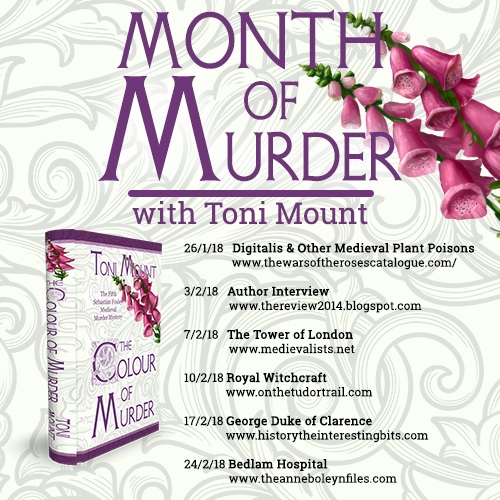








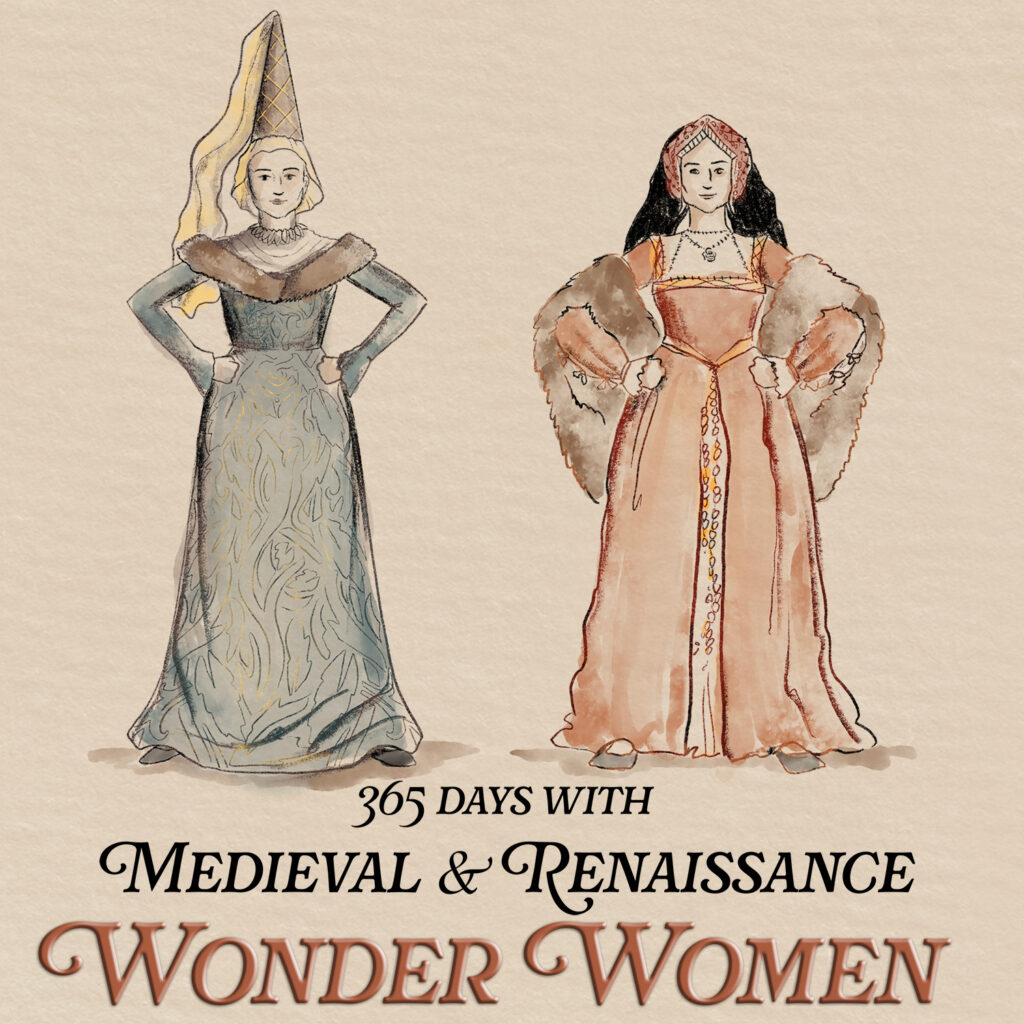

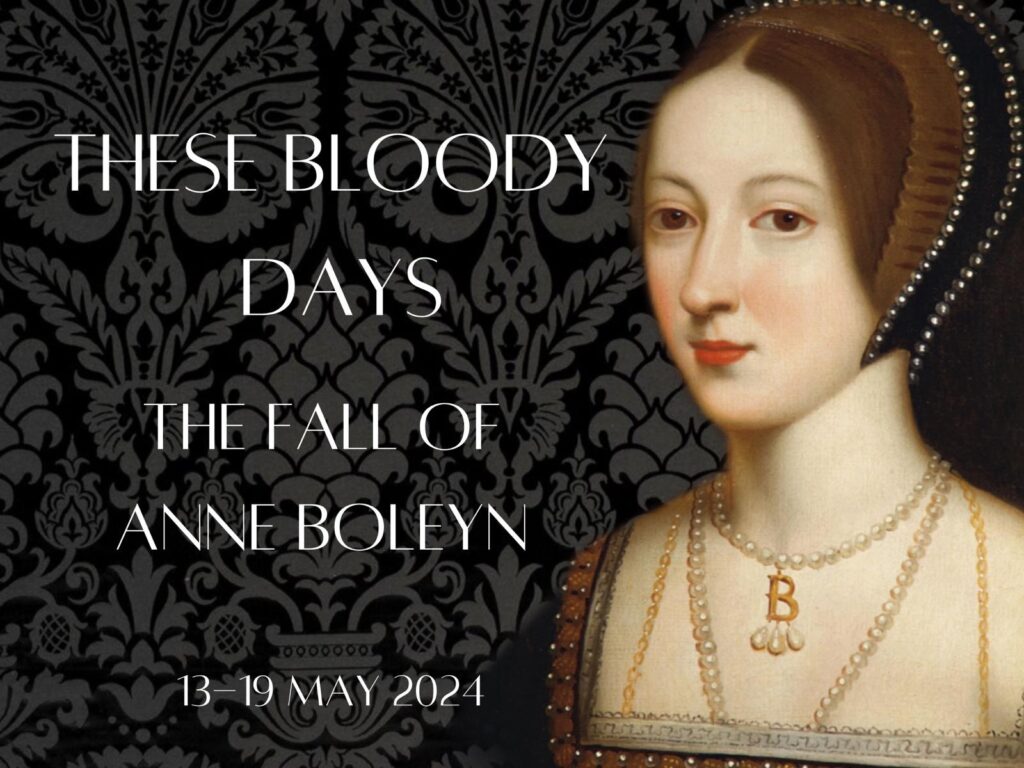
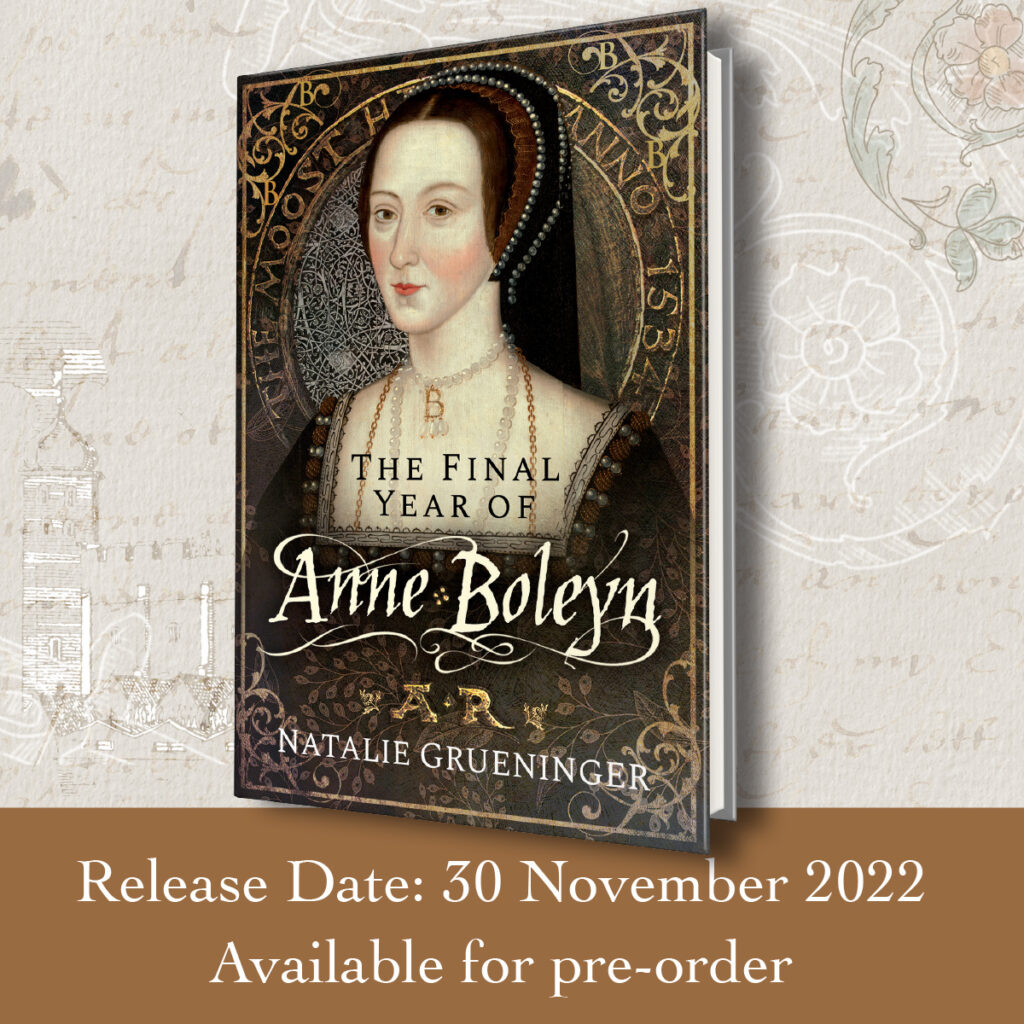
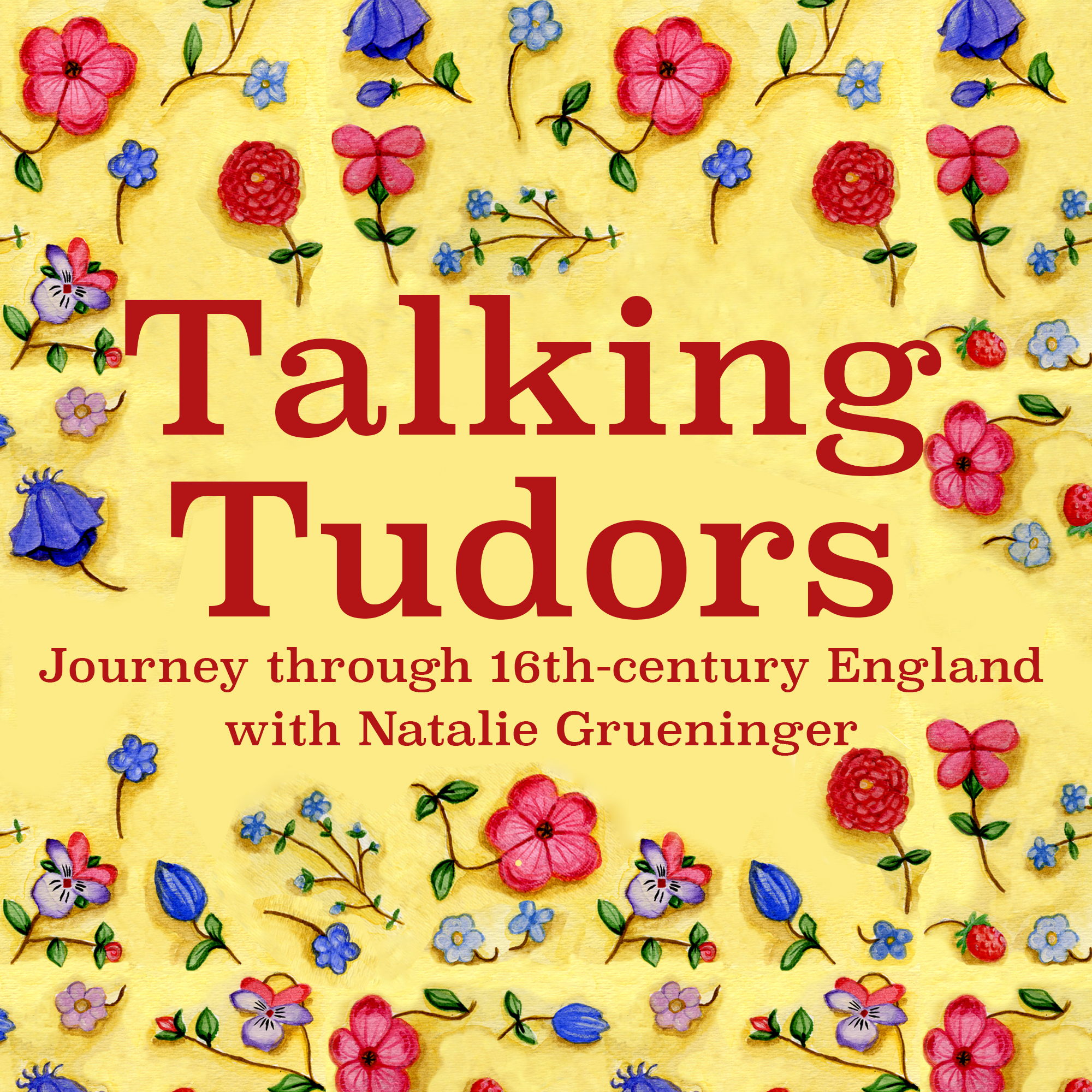

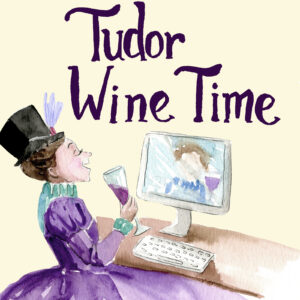
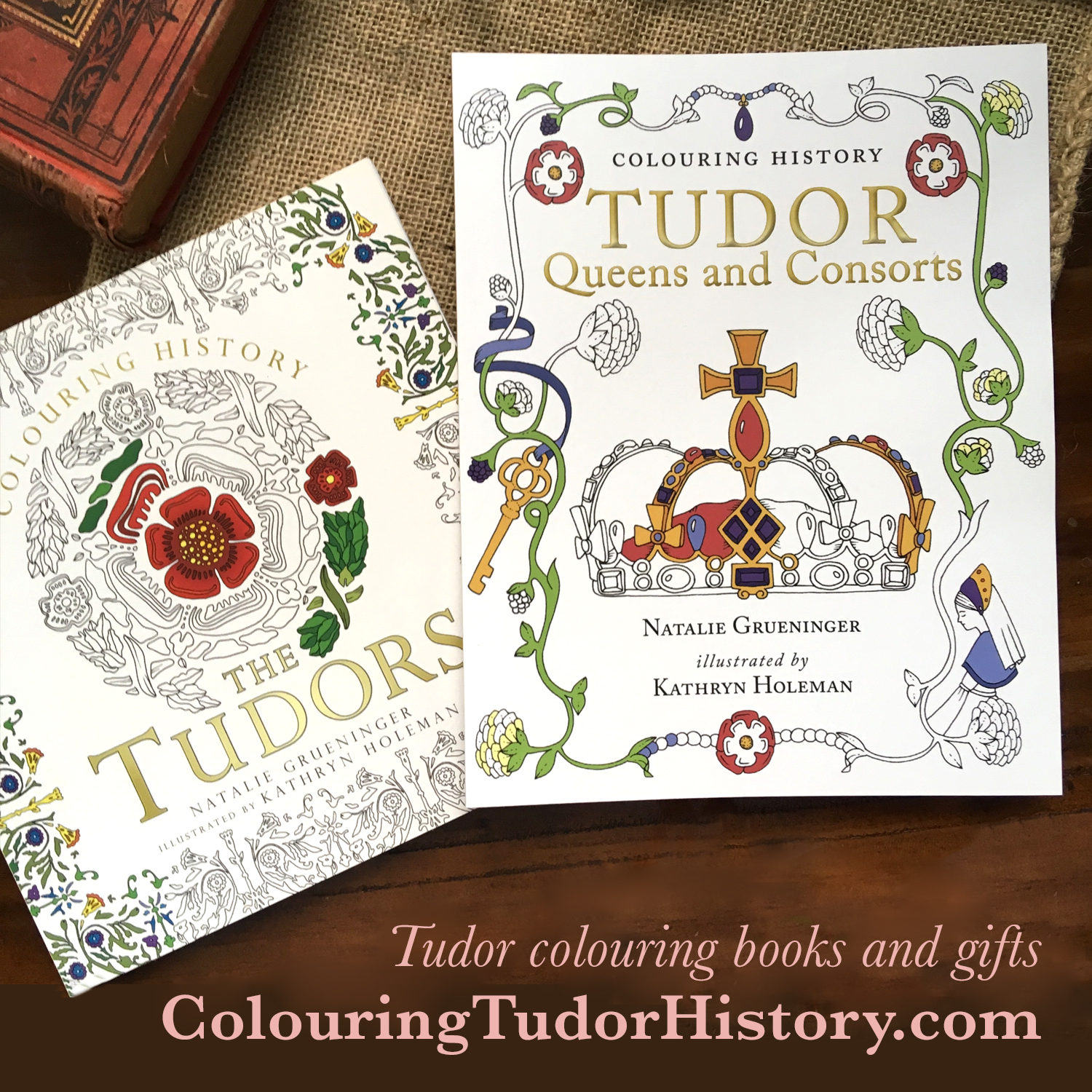



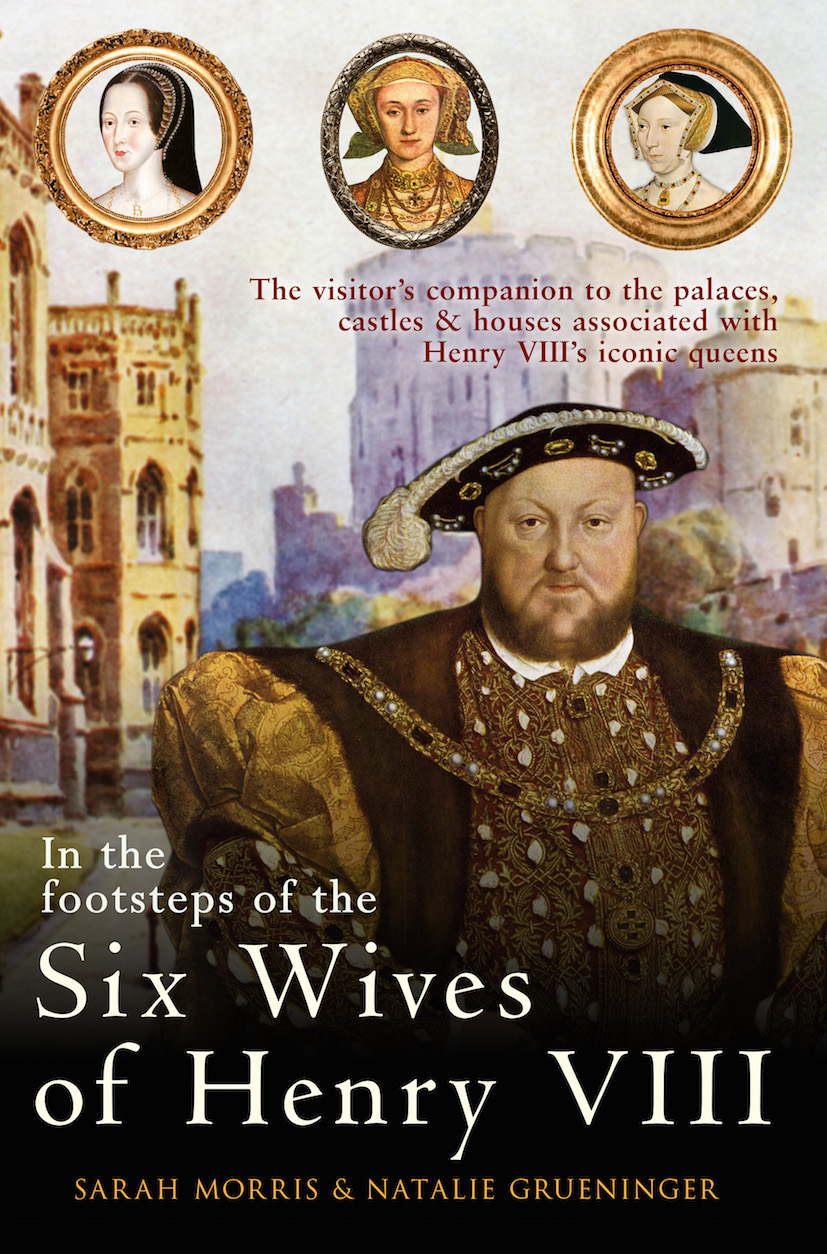
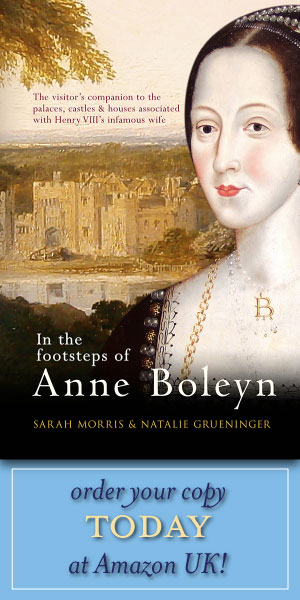


Rosemary Hawley Jarman used the witchcraft thing, plus the legend that they were descended from Melusine, who acted as a sort of family banshee. (In fact, Melusine would be the ancestor of the current British Royal Family!)
Undoubtedly an older sexy woman and a young man who wasn’t used to a woman saying no to him. The last time a woman said no, he agreed to marry her too. If he’d kept it in his pants, history might have been very different!
I love this kindof history. It isn’t very well known and most don’t want to think of reasons why women were accused. Thank you for post! I really enjoyed it. And your book looks good to!
Medieval times + a whodunnit? Sounds fantastic!
Absolutely fascinating, and terribly sad article.